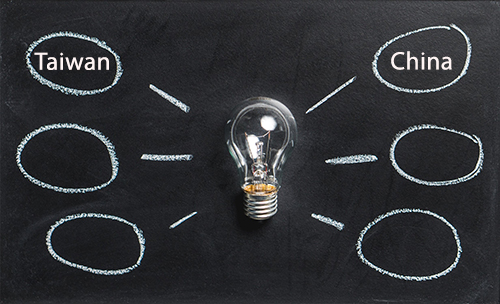【Patents】 A brief review on the April 2020 amendments to Japanese Design Act, and a cross-comparison with regulations in Taiwan and China
2020-05-15 Shang Lin LU Patent Attorney | Natsuko Senior IP Management Consultant

The Japan Patent Office (JPO) has published the latest information regarding recent law amendments to the intellectual property laws, especially to the Design Act, and the main part of the amendments has already entered into force on April 1, 2020 (below just referred to as “the amendment”). This article will provide a recap on the important amendments in Japanese Design Act, as well as comparing them with the similar regulations in Taiwan and China.
Expending the scope of protection
- Graphic design
After this amendment, the limitation that graphic images shall be displayed on the article itself no longer exists; as long as a graphic image is provided for the purpose of operating a machine, or displayed as the result of a machine exercising its functions, it can be a subject matter of protection, for example graphic interface in application software or a projected graphic image. Purely decorative graphics are still not protected under the Design Act.
On the other hand, the allowable subject matter relevant to graphic designs can be found in Taiwanese Patent Act that computer generated icons and graphic user interface applied to an article are also deemed creations of “pattern” or “a combination of pattern and color” temporarily exists on a display device, and “applied to an article”. In other words, for graphic designs, as long as they are applied to an article (e.g. a game screen) they can be protected under the Patent Act; there is no relevant limitation on whether the image is provided for operating the machine or associates with exercising functions, which is less limited comparing with same under Japanese Design Act.
In China, among the acceptable subject matters of design patents, the graphic user interface design refers to designs in which the main elements of a design includes a graphic user interface (GUI), and the design application should indicate which product the GUI is applied to. However, although the graphic design itself is protected, we could that see there are limitations on it. For example, game screens, and graphics which are not related to functions for human–computer interactions (HCI) are expressly excluded from patentable subjects, and is more limited than in Taiwan.
We could take a navigation application for vehicles as an example as in Fig. 1, which is a startup screen displaying the logo of the manufacturer; it is protectable in Taiwan under the current definition; in Japan, because the logo is not associate with exercising functions of a machine, therefore this screen would not be patentable; in China, because startup screen is not related to functions for HCI, hence is also not patentable.
Fig. 2 is a projected graphic displayed on the scuff plate. In Japan it becomes a patentable subject matter after the law amendment, and in Taiwan it is also not excluded from being a patentable subject. But in China, because it is not a graphic for HCI, it is excluded from design patents.
Fig. 3 is a screen of the navigation panel; the images on the function buttons are patentable in all Taiwan, Japan and China.

Fig. 1

Fig. 2

Fig. 3
- Buildings and interior design
As to interior designs, they usually refer to a set of different articles including decorations on walls, furniture, lighting equipment, etc., which are not coordinated as a whole. Before the amendment, in Japan such sets of things are not only impossible to be field together as one ordinary design, but also not able to be filed as a design of set articles. After the amendment, if interior design as a whole can generate a unified aesthetic impression, it can be filed as one design. In contrast, in Taiwan and China there are no specific rules for interior designs, and similar to Japan before the amendment, in practices the interior designs usually do not satisfy the requirements that an application shall relate to one design or set articles, and thus cannot be patented as a design patent.

Fig. 4 TW D183690S

Fig. 5 CN 302830904S
Loosening the restrictions of related designs (derivative designs)
In Japan, after the amendment, the time limit for filing a related design has been extended to 10 years after the filing date of the original design. (The original time limit was that a related design can be filed before the original design being published in a design gazette, and usually the period would be no longer than eight months.) Furthermore, a new design which is only similar to a related design but not to the original design were not allowed to be filed as a derivative design before the amendment, but now this kind of design can also be filed as a related design (Fig.6).
The derivative design system in Taiwan is the same as Japan was before the amendment, that a derivative design can only be filed before the original design is published, and a design only similar to a derivative design (but not to the original design) will not be accepted. In China, there is no similar systems, but similar designs of the same product can be filed within one application.

Fig. 6 A derivative design and following derivative designs
Lengthening the term of design rights
After this amendment, the term of design rights has been changed to 25 years from the filing date, same as registered Community designs in EU. In Taiwan, an amendment to the Patent Act in 2019 has lengthened the original term of 10 years to 15 years from filing. In China, there is a draft amendment which suggest lengthening the term to 15 years which has not yet entered into force, so the current term is still 10 years from the filing date.
Below please find a comparison of the term of the design right:
| Countries | Term of design rights |
| Japan | Before the amendment: 20 years from the registration date. After the amendment: 25 years from the filing date. |
| Taiwan | 15 years from the filing date. |
| China | 10 years from the filing date. |
Strengthening the rules regarding indirect infringement
Regarding the scope of acts deemed constituting indirect infringement, in Japan before the amendment, only producing, importing, etc., “any product to be used exclusively for the producing of the article to the registered design or a designs similar thereto” were deemed as indirect infringement. However, if a person had broken down one design-infringing product into parts, and if the parts were not “exclusively” for the infringing product, this person could import these parts without being accused of infringement. The amendment has rectified this issue by strengthening rules regarding indirect infringement. Now, if the same person knows the parts are essential for producing a counterfeit, even if these parts are not exclusively for producing such product, it will also be deemed as infringing the design right.
In Taiwan, there was a draft amendment to the Patent Act in 2008, in which “if one person has knowledge that a thing is used for the main technical solution to solve the technical problem in an invention patent, and offers for sale or sells such thing to another person infringing the patent right, this act is deemed infringing the patent right, unless such thing is generally available from common transactions”. The subjective element (has knowledge) and objective element (exclusively for) were similar to regulations in other countries. However, at that time representative from industries had concerns that many businesses in Taiwan were in the OEM industry, and this draft article could open a door to unnecessary law suits, hence were deleted from the final amendment eventually, which means there is no express rules for indirect infringement in the Patent Act. In current practices, the court usually deem such acts as contributory infringement, no matter whether the parts are for exclusive use, if adequate cause-and-effect relationship can be established between the said parts and the infringement, it may lead to contributory infringement.
In China, there are no rules expressly define indirect infringement. In practices it is usually considered that, to constitute indirect infringement, subjectively a person should have intent to lead or abet others to infringe a patent right of a third party, objectively the person should perform an act of assisting or abetting others to infringe rights, and such act should have close relationship to an act of direct infringement. For example, if one knows product A is a component exclusively for performing a patent right, and for the purpose of operating a business, produces or sells product A without allowed by the patent owner, and provide product A to others to perform an act resulting in infringing other’s patent right, it may constitute indirect infringement. A draft amendment has included rules for indirect infringement, but the draft has not yet come into force.
Image sources:
Fig.1 ~ Fig. 3: From Nissan’s official website and product manuals.
Fig. 4: From TIPO’s patent database.
Fig. 5: From CNIPO’s patent database.
Fig. 6: From JPO’s website.
消息來源:
